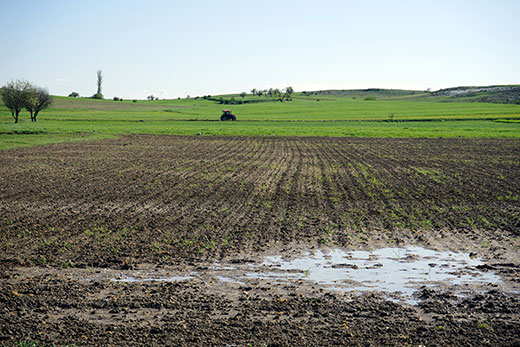Nebraska Planting Progress and WASDE Report Analysis

Continued rain events have hampered efforts’ in the fields for many farmers in the major planting states so far, although significant gains were made in the last week.
Monday’s USDA Crop Progress Report for the week ending May 8 saw 64 percent of the nation’s corn planted, in comparison with 45 percent last week. This measures up as slightly behind last year’s corn planting at 69 percent, though well ahead of the 5 year average of 50 percent.
In Nebraska, rain delays were especially felt, though Cornhusker State farmers made incredible strides in the last week: As of Sunday, 53 percent of the state’s corn was in the ground, compared to only 26 percent last week at the same time. This is still behind last year’s 71 percent benchmark, and slightly behind the 5 year average of 59 percent.
It’s a similar story both nationally and statewide for soybeans. Overall, 23 percent of soybeans are planted, slightly behind last year’s 26 percent, though well ahead of last week’s 8 percent, and the 5 year average of 16 percent of beans planted.
Nebraska soybeans are 13 percent planted, behind last year’s 21 percent, and the 21 percent 5 year average. In comparison with last week’s 2 percent, however, Nebraska farmers were evidently able to get into the fields to plant beans at some point.
Overall corn emergence stood at 27 percent, ahead of last year’s 23 percent and ahead of the 17 percent 5 year average. In Nebraska, corn emergence was at 15 percent, in line with the 5 year average, though behind last year’s 24 percent.
Of the 18 states that make up the report, Minnesota, Iowa, and Illinois made the most progress, and while Indiana leads in the slowest progress category due to continued rain delays. The report found that 6 other states remain behind 5 year averages: Colorado, Michigan, Nebraska, North Carolina, Ohio, and South Dakota.
The Tuesday, May 10th WASDE Report was expected to be bearish on the grain markets, with estimated corn stocks increasing to 2.3 billion bushels, due to higher corn acres and trending yields of 168 bushels per acre. New crop soybeans were expected by analysts to be similar to last year’s figure of 440 million bushels. However, that analysis was way off and traders were surprised. The carryover for new-crop bean was 305 million bushels, which caused soybean futures to take off and increase 60 cents a bushel at one time. In addition to the lower carryover, heavy rainfall in South America and its negative effects on production there continues to be one of the main factors for the more favorable grain markets.
Amid the fluctuating markets, farm economists continue to urge those marketing crops to manage their risk.
“It’s going to be extremely difficult to try to outguess these markets,” according to Mike Mock of The Andersons Grain Group.
Sources consulted: “Analysts: USDA Report Could Bring Out Bears.” AgWeb.com. Farm Journal. 09 May 2016. Web. 10 May 2016. “Crop Progress.” NASS/USDA. USDA. 09 May 2016. Web. 10 May 2016.

